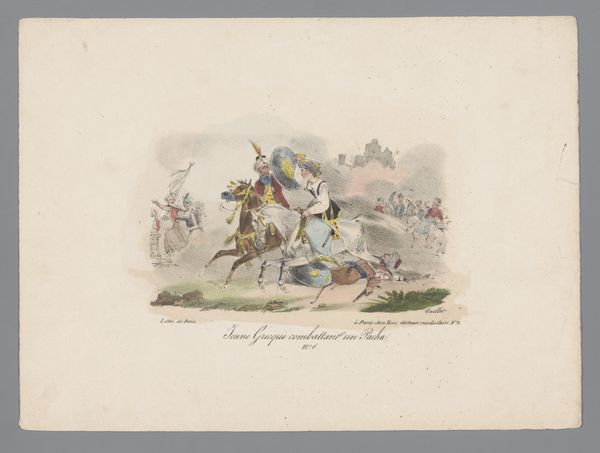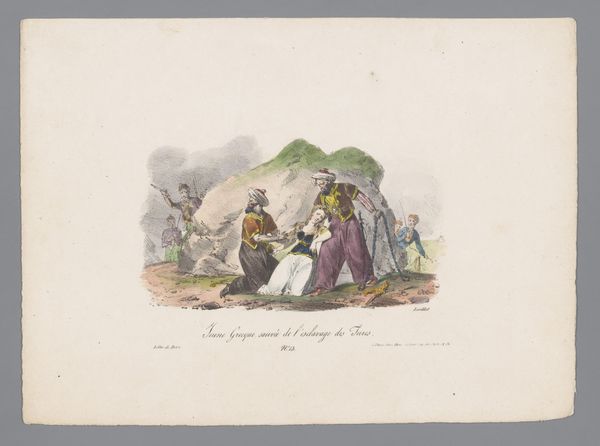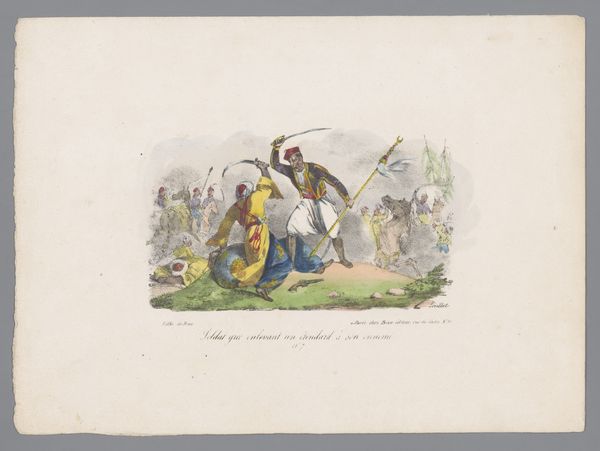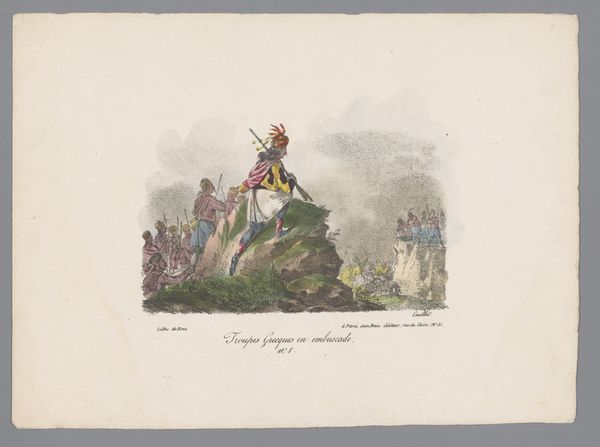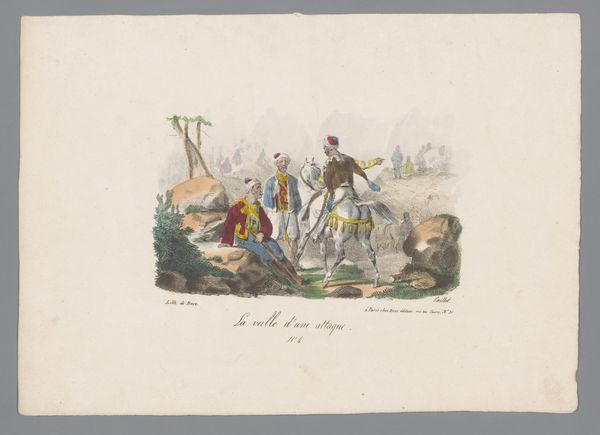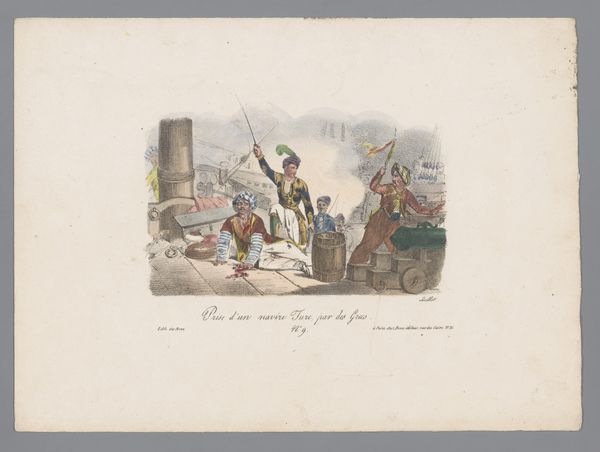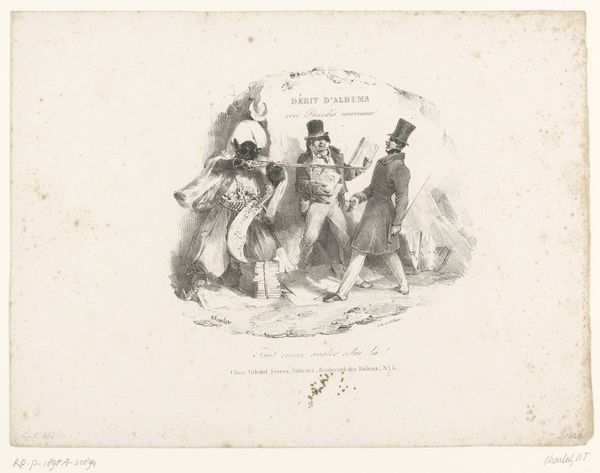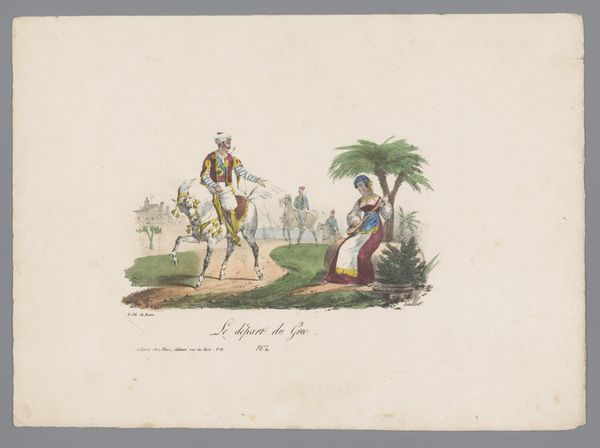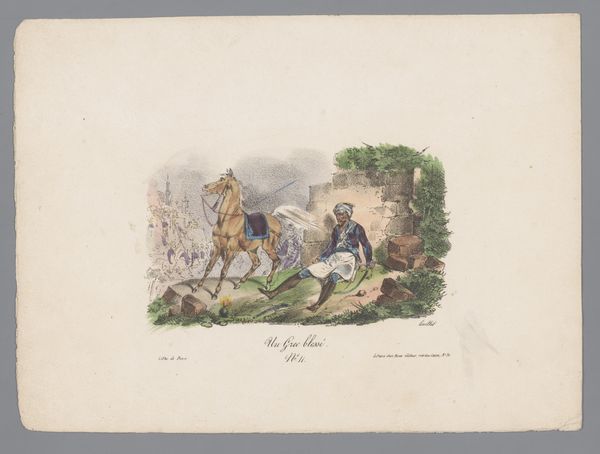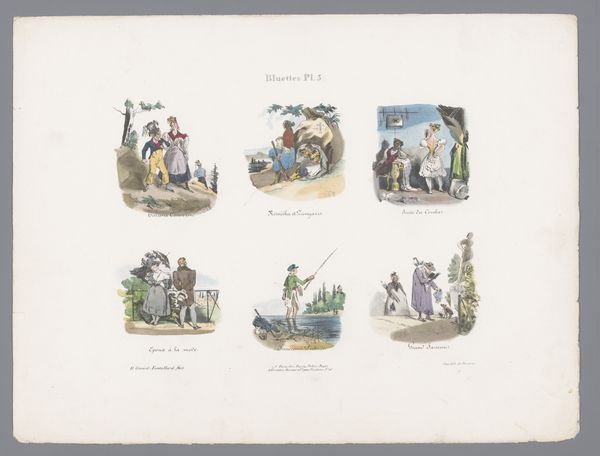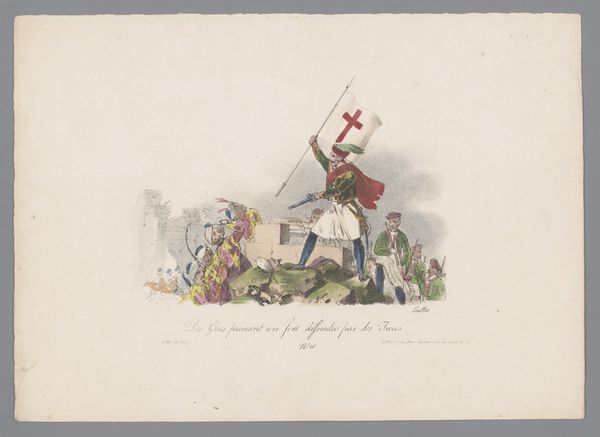
drawing, print, watercolor, ink
#
drawing
#
narrative-art
# print
#
landscape
#
figuration
#
watercolor
#
ink
#
coloured pencil
#
romanticism
#
history-painting
#
watercolor
Dimensions: height 211 mm, width 287 mm
Copyright: Rijks Museum: Open Domain
Curator: We're looking at "Revenge of a Greek Family," a print created between 1829 and 1835 by Karl Loeillot-Hartwig. It combines ink, watercolor, and what looks like colored pencil on paper. What strikes you first about it? Art Historian: It’s charged with tension. The color palette is bright, almost festive, but the scene depicts imminent violence. There’s a dramatic push and pull, figures frozen mid-action against a stark backdrop, evoking classical narratives of retribution. Curator: The lithographic process would have allowed for relatively quick reproduction, making it accessible to a broader audience during a period of intense Philhellenism. Think about the implications – how does mass production shape perceptions of distant conflicts? Art Historian: Mass production also standardized the imagery. We see the Turkish leader on horseback, rendered with certain exoticizing details that fit within established orientalist tropes. Notice the power dynamic visually reinforced here. The Greek family appears cornered. Curator: Exactly. Consider also the economics: who was commissioning and consuming these prints? What role did these images play in fueling support – both financial and ideological – for the Greek cause? Art Historian: The raised rifle, the desperate expressions... These aren't simply details. The rifle symbolizes immediate threat but also Greek resistance. The family’s emotional vulnerability pulls on the viewer's heartstrings, creating a stark contrast with the seemingly unconcerned Turkish figure on horseback. Curator: I agree. And I'd also consider the materiality of the piece. The deliberate use of watercolor softens what might otherwise be a brutal depiction, rendering it palatable for a domestic audience, safely distanced from the harsh realities of war. Art Historian: In that softness lies another layer of interpretation. Romanticizing warfare transforms bloodshed into digestible drama, stripping it of some of its most unsettling truths while bolstering its emotional resonance. Curator: Fascinating how a single image embodies such complexity! Examining its creation, circulation, and the cultural moment really allows us to unravel so much. Art Historian: Indeed. Reflecting on the imagery and its potent symbolism opens up deeper understandings of cultural memory and conflict.
Comments
No comments
Be the first to comment and join the conversation on the ultimate creative platform.
